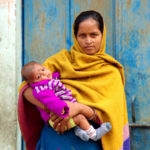I was searching for some images online, for an article on Muslim Women.
It came as no surprise for me that I could not find a proper image. Instead, hundreds of pictures of burka-clad women covered in black from head to toe flooded in.
Black burka-clad woman of no identity is the famous stereotypical image attributed to Muslim women.
You are labelled and judged even before you articulate a word.
The ‘otherness’, and ‘alienation’ generally Muslims and particularly Muslim women feel is so intense and on the increase by leaps and bounds
The term ‘Africa’, generates a notion of an uncivilised, illiterate and poverty-stricken cluster of people. The greatest misconception about Africa is that it is one country and Africans share a Homogenous Culture.
Likewise, the expression ‘Muslim Women’ is often correlated to tags such as oppressed, subjugated and behind the times. Muslim women are not a homogenous, fixed group which can be boxed in. Muslim women like all women, have diverse identities derived from diverse backgrounds, holding different values and views.
“Do not trust elitist versions of history and science which respond to dominant interests, but be receptive to counter-narratives and try to recapture them,” says Orlando Fals Borda, a renowned sociologist who developed a research methodology known as participatory action research.
Media and literary representations do not do justice to the diversity, uniqueness and complexity of Muslim women.
Aftermath of 9/11 and the USA’s War against terrorism, framing of Muslims in mainstream media drastically changed resulting in a change in people’s attitudes towards them. Feelings of alienation and otherness have increased within the Muslim community tremendously.
Sexism is widely prevalent in the Muslim society like in any patriarchal society in the world. There is no denial in that. However, Western popular culture paints Muslim women with broad strokes; they are projected as either the victims or the rebels fighting against victimisation. But in reality, Muslim women are faced with two challenges
1. The Struggle within their own communities against sexism
2. The battle against so-called saviours who are prejudiced and ready to go to any heights to liberate and save Muslim women from oppression.
“Power exists as long as the group stays together against the “others”… Exercising power over other people affects them, through action or inaction…whether or not those who exercise power are aware of the success or consequences of their practices and whether or not the other party is aware of the power being exercised over him or her. ” Professor Philomena Essed says.
In a world order where Muslims are increasingly classified as the ‘other’, there is no wonder, the identity and the distinctiveness of Muslim women has no name.
Though religion is a static component which unites all the Muslims around the world, they live in diverse cultural settings, speak different languages, follow distinctive lifestyles.
Many people, may bracket together Islam with the Middle East, nearly two-thirds (62%) of Muslims live in the Asia-Pacific region.
The fact is more Muslims live in India and Pakistan than in the entire Middle East-North Africa region.
Cultural groups across the world have distinct models, and we tend to measure every society against the western models of culture and identity.
Middle East, East Asia, Asia, Sub-Saharan Africa or Latin America, each of the regions, have unique localised models of cultural behaviour and artefacts.
Our cultures differ, the nuances and the unmentionable sensitivities vary.
However, the grand narrative portrays Muslim women as the oppressed vulnerable group. Replacing the grand, universal narratives with small, local narratives is very important. The social transformations in Muslim societies must begin within. They should be given the opportunity to interpret themselves, without having to be represented by the West.
I was amazed to realise that for many Westerners, Scheherezade was considered a lovely but simple-minded entertainer someone who relates innocuous tales and dresses fabulously. In our part of the world, Scheherezade is perceived as a courageous heroine and is one of our rare female mythological figures.
-Fatema Mernissi
You all might have heard about the beautiful Thousand And One Nights stories. Shehrezade was an intelligent woman who used stories to change the mind of the king, to save her life as well as the thousands of other women.
Muslim women also possess such thousand and one micro-narratives instead of one grand narrative.



